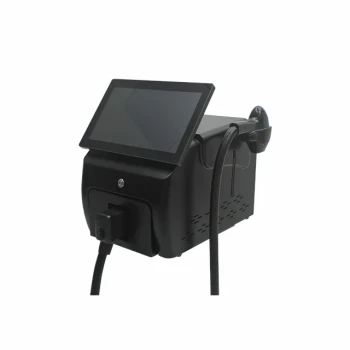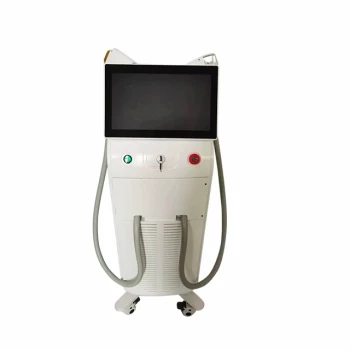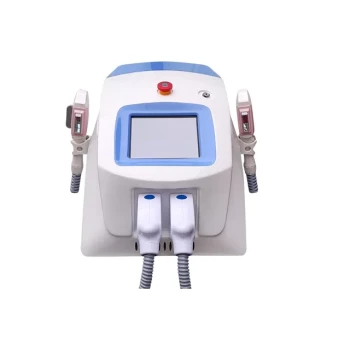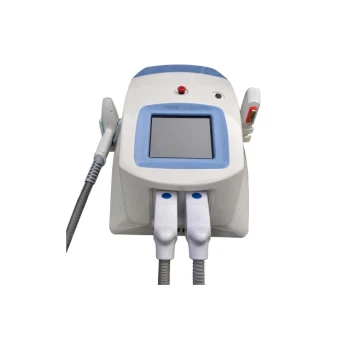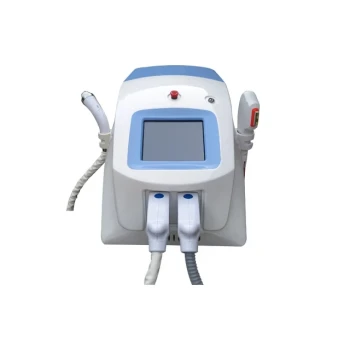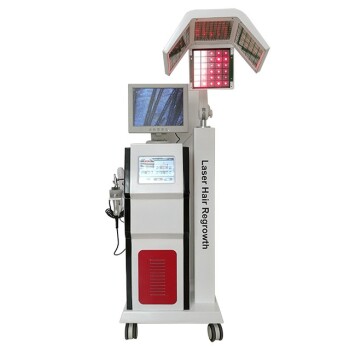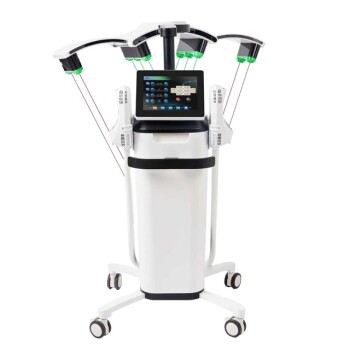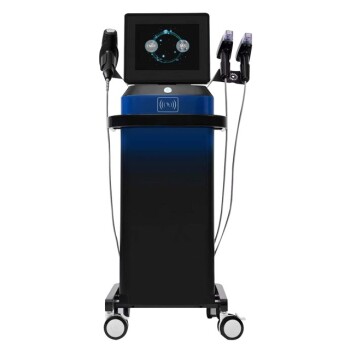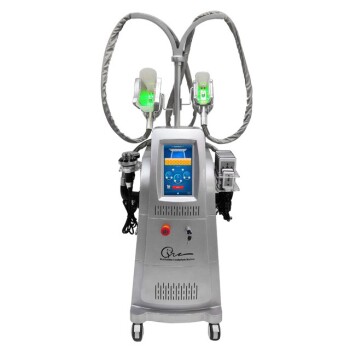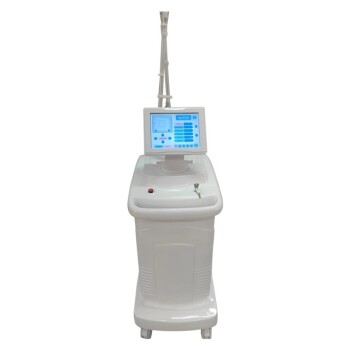To determine which is "better," you must first define your primary goal. Diode lasers offer superior power and precision for targeted applications like hair removal, while Intense Pulsed Light (IPL) provides greater versatility for addressing a wider range of surface-level skin concerns. The best choice is not about universal superiority, but about selecting the right tool for a specific job.
The fundamental difference is focus versus versatility. A diode laser uses a single, targeted wavelength for deep, precise treatments, whereas IPL uses a broad spectrum of light to address multiple, more superficial concerns simultaneously.
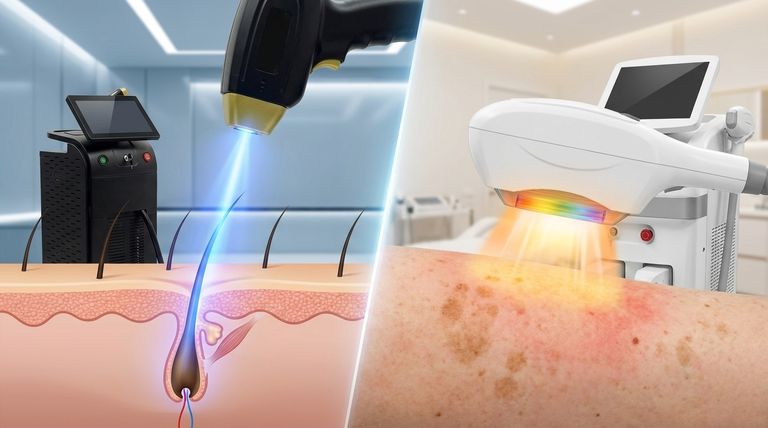
The Core Difference: A Focused Beam vs. a Broad Spectrum
Understanding how these two technologies work reveals why they excel in different areas. Their primary distinction lies in the nature of the light they produce.
How a Diode Laser Works
A diode laser emits a single, concentrated wavelength of light. This coherent beam of light travels in one direction, allowing it to penetrate deeply and precisely into the skin.
Think of a diode laser as a sniper rifle. It is calibrated to hit one specific target—in the case of hair removal, the melanin within the hair follicle—with maximum impact and minimal collateral damage to the surrounding tissue.
How IPL Works
IPL, or Intense Pulsed Light, is not a laser at all. It generates a broad spectrum of light, similar to a powerful camera flash, containing multiple wavelengths.
Think of IPL as a shotgun. It covers a wider, more diffuse area. Filters are used to narrow the spectrum and target various concerns like brown spots or redness, but it remains less focused and more superficial than a true laser.
Comparing Key Applications
The "better" technology depends entirely on the specific condition you are trying to treat.
For Hair Removal
The diode laser is widely considered the gold standard for hair reduction.
Its specific wavelength is highly absorbed by the melanin in the hair follicle, generating the heat needed to destroy it efficiently. This precision makes it effective and generally safer for a wider range of skin tones.
For Pigmentation and Sun Damage
Both technologies can be effective here, but for different types of pigmentation.
An IPL is often the preferred choice for treating widespread, superficial pigmentation like sun spots, age spots, and freckles across the face or chest.
A diode laser can also remove pigmentation but is typically used to target deeper or more isolated pigmented lesions with greater precision.
For Redness and Vascular Concerns
IPL is generally the superior choice for diffuse redness, rosacea, and broken capillaries.
Its broad spectrum contains wavelengths that are well-absorbed by hemoglobin (the red pigment in blood), allowing it to effectively collapse unwanted blood vessels near the skin's surface.
Understanding the Trade-offs
Choosing between these technologies involves balancing precision, treatment scope, and safety considerations.
Precision vs. Scope
A diode laser's strength is its high precision, which comes at the cost of a narrow scope. It performs its specific task, like hair removal, exceptionally well but is not a tool for overall skin rejuvenation.
IPL's strength is its broad scope. It can address color, tone, and texture issues simultaneously, making it a "jack-of-all-trades" for surface-level concerns, but it lacks the deep, targeted power of a laser.
Treatment Experience
Diode laser treatments can be faster for a specific area due to their power and efficiency, often requiring fewer sessions for a goal like hair removal.
IPL devices typically have a larger treatment head, allowing them to cover a large area quickly, but may require more sessions to achieve results comparable to a laser for a specific, targeted issue.
Skin Type Considerations
The focused energy of a diode laser is often safer for darker skin tones. Its specific wavelength targets the hair follicle's melanin with less risk of being absorbed by the surrounding melanin in the skin itself.
IPL's broad spectrum carries a higher risk of causing pigmentation changes (either lightening or darkening) in darker skin if not administered by a highly experienced professional with the correct device settings.
Making the Right Choice for Your Goal
The most effective treatment is one that is perfectly matched to your primary skin concern and skin type.
- If your primary focus is hair removal: A diode laser is almost always the more effective, efficient, and safer technology.
- If your primary focus is widespread sun damage or general skin tone improvement: IPL is an excellent and highly versatile option.
- If your primary focus is redness, rosacea, or broken capillaries: IPL is typically the superior choice for targeting these vascular issues.
Ultimately, a consultation with a qualified dermatologist or licensed practitioner is the critical step to diagnosing your needs and selecting the technology that will deliver the safest and most effective results.
Summary Table:
| Feature | Diode Laser | IPL |
|---|---|---|
| Technology | Single, focused wavelength | Broad spectrum of light |
| Best For | Hair removal (gold standard) | Widespread sun damage, redness |
| Precision | High (like a sniper rifle) | Lower (like a shotgun) |
| Skin Tone Safety | Safer for darker skin tones | Higher risk for darker skin |
| Primary Strength | Deep, targeted treatments | Versatility for surface concerns |
Ready to elevate your clinic's results and client satisfaction?
Choosing the right professional equipment is the first step to delivering superior, safe, and effective treatments. BELIS specializes in providing state-of-the-art medical aesthetic equipment, including advanced diode laser and IPL systems, tailored for medical aesthetics clinics and premium beauty salons.
Our experts will help you select the perfect technology to match your service offerings and client demographics, ensuring you invest in equipment that drives growth and builds trust.
Contact BELIS today for a personalized consultation and discover how our professional solutions can become the cornerstone of your success.
Visual Guide

Related Products
- Clinic Diode Laser Hair Removal Machine with SHR and Trilaser Technology
- Trilaser Diode Hair Removal Machine for Beauty Clinic Use
- Diode Tri Laser Hair Removal Machine for Clinic Use
- Diode Laser SHR Trilaser Hair Removal Machine for Clinic Use
- IPL SHR Hair Removal Machine for Permanent Hair Removal
People Also Ask
- Which is more effective, diode or IPL? The Definitive Answer for Permanent Hair Reduction
- How does diode laser hair removal work? The Science of Targeting Hair Follicles
- Is diode laser effective for hair removal? Achieve Long-Term Hair Reduction with Gold Standard Tech
- How long does diode hair removal last? Achieve Long-Term Smoothness
- Can you use laser hair removal on intimate areas? Achieve Lasting Smoothness and Comfort

